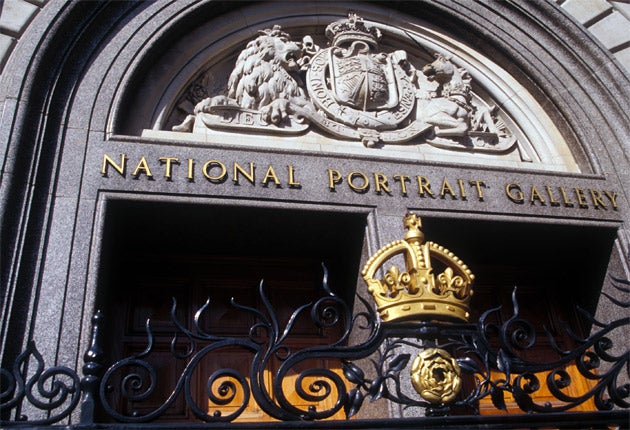The row over art that led to a double shooting
Details emerge of 1909 murder in gallery

In its time, the National Portrait Gallery has had its fair share of historical murderers on its walls.
Now, the first detailed account of a real murder in the gallery, over an apparent artistic disagreement which happened in full view of staff and visitors, has been published.
A letter written by then-director James Milner two days after the 1909 tragedy tells how staff had to wash bloodstains from the floor after a "well-dressed elderly man" shot his wife and then himself in the head.
The couple, from America, were said to have "gesticulated excitedly" while looking at one of the pictures before the man – named as Mr John Tempest Dawson – reportedly drew his revolver and, "placing the muzzle close to the woman's head, fired", before turning the weapon on himself.
Mr Milner wrote in his account: "I drew the Sergeant's attention to the shocking amount of blood which she [the stricken woman] had lost, and suggested that some cloths or wraps might be placed under her."
After police ignored his suggestion and proceeded to carry the woman's bleeding body through the gallery, he wrote: "I instructed the head messenger to see that the messengers at once proceeded to wash away the bloodstains which had badly marked the floor over the whole distance she had been carried."
Other documents in the catalogue show what happened to the gallery's works during the First World War as gun-wielding staff were pressed into service to guard portraits stored near St Paul's Cathedral.
A 1918 letter, addressed to Mr Milner and marked "SECRET", recommended that he follow the example of The National Gallery and post armed sentries to guard the works.
The note reads: "I should mention that at the Aldwych Tube which is, as you know, used by the National Gallery [sic], the men are armed with revolvers. You will perhaps wish for a similar precaution to be taken at King Edward Building."
The archives also reveal that, in 1939, while many of London's children were being evacuated, the gallery's most important portraits were also being moved out of the capital, to the Buckinghamshire estate of Lord Rosebery. They stayed there, guarded by gallery attendants, until the end of the war.
Among the images now chronicled in the archive are photographs of some of the gallery's wartime staff and a series of pictures charting the journey of the artworks from London's West End to their new home in the countryside.
The launch of the online archive comes a month after the gallery's award of £17,909 from the National Cataloguing Grants Programme for Archives to catalogue the papers of its first director, Sir George Scharf, who died in 1895. Those papers will join those of other former gallery directors, such as Sir Lionel Cust and Sir Roy Strong, already available in the new online archive catalogue.
The archives are being made available to the public on the National Portrait Gallery's website: archivecatalogue.npg.org.uk.
Subscribe to Independent Premium to bookmark this article
Want to bookmark your favourite articles and stories to read or reference later? Start your Independent Premium subscription today.
